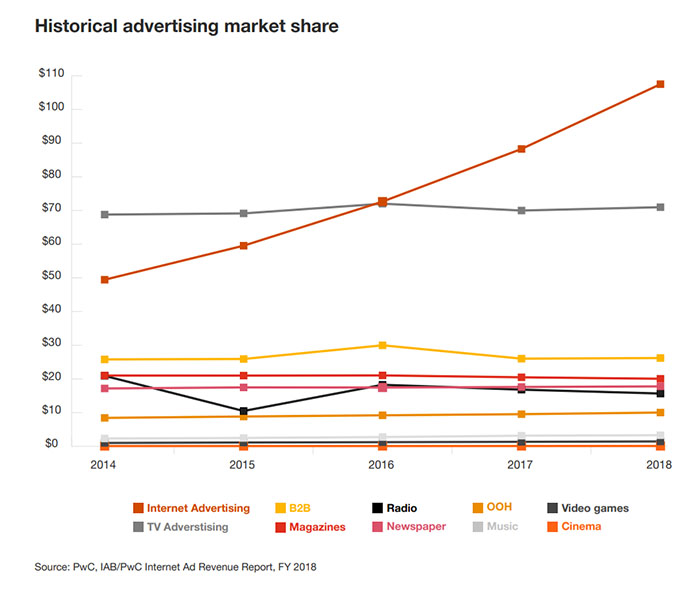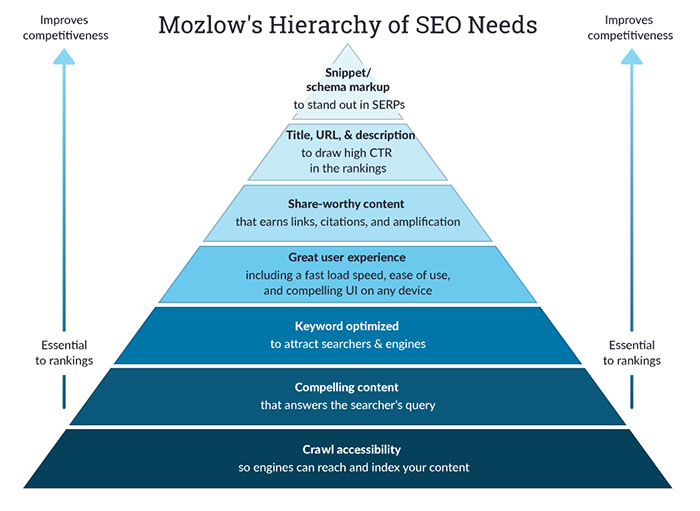Paid search is still the leading digital advertising channel in 2019. According to industry publications such as Search Engine Journal, digital ads will only continue to expand their dominance in the advertising world. In fact, IAB and PwC’s 2018 report showed that Internet advertising is the only media type that experienced double digit growth year-over-year.

In this blog post, we’ll provide you with a high-level overview of the differences between the terms SEM, SEO and PPC advertising. As best practices change over time, standard definitions of industry terms evolve and new acronyms are invented frequently. It’s easy to get confused or caught up in the minutiae of these terms.
Whether you are a seasoned marketer, or brand new to digital marketing and its unique vocabulary, we know you’ll find value in this blog post. Here’s what we’ll cover:
1) The Difference Between SEM, SEO and PPC
2) PPC Terms and Best Practices
1) The Difference Between SEM, SEO, PPC and Google Ads
Whether you are a digital marketer for a business, yourself, or multiple clients, you need to be able to clearly explain the difference between SEM, SEO, and PPC.
SEM (Search Engine Marketing)
SEM (Search Engine Marketing) is the broad term that explains the method of improving a website’s visibility on search engine results pages (SERPs). Traditionally, SEM was an umbrella term that meant any form of internet marketing that promoted a website’s search engine visibility. Search Engine Land explains how in the early 2000’s, SEM was defined as methods including “…SEO, paid placement, contextual advertising, digital asset optimization, and paid inclusion”.
Over time, the term SEM has become synonymous with paid search methods only. SEM started to become the preferred term for paid search around 2006. What is the consensus on all of this? The most widely accepted definition of SEM at the moment is: “the process of increasing traffic to your website by purchasing ads on search engines.”
However, you will still see some blogs using its original definition. Pay attention to the context of the usage of the term to avoid confusion.
SEO (Search Engine Optimization)
Search engine optimization is arguably the backbone of digital marketing. We’ve written dozens of articles about SEO, and our team follows the latest SEO news very closely. We still find ourselves amazed by the industry’s rapid evolution. To be sure your website follows best practices for SEO, it’s smart to bring a team of professionals on board. SEO agencies can help your business grow its online presence and build brand authority.
Strong SEO efforts will place a company’s website near the top of search engine results pages (SERPs) organically. The software company Moz does a great job of defining SEO in a clear, concise way in their “Beginner’s Guide to SEO”: “the practice of increasing both the quality and quantity of website traffic, as well as exposure to your brand, through non-paid (“organic”) search engine results.”
Ultimately, you want your website to be listed first on the SERPs, meaning that it’s the best fit to answer Internet user’s search queries for a given term (i.e. “pizza place nyc”). The following infographic from Moz is a great way to visualize some of the major factors that influence SEO success.

SEO pioneers can attest to the fact that SEO isn’t what it used to be. As search engines like Google have become “smarter”, many of the tactics people swore by five years ago are practically useless now. Be sure to do your research and abandon the tactics that no longer work in 2019.
PPC (Pay Per Click) Advertising
The PPC (Pay Per Click) advertising model is when an advertiser pays every time someone clicks an ad that brings that person to their website. The advertiser pays the host of whatever platform is facilitating the placement of the ad.
Some of the most popular advertising hosts today are Google, Bing, Amazon, Facebook, Instagram, Twitter, and LinkedIn. In order to buy ad placement for a PPC ad, you have to win the bid for that ad position. PPC advertising using Google, Bing, or other search engines falls under the category of paid SEM.
Most advertising services operate with real-time bidding, like Google Ads. It’s important to understand the ad auction process of the advertising platform you choose. For example, if you use Google Ads, you need to realize that your ad position is determined by Ad Rank. We love Marketing Land’s blog post and infographic on realtime bidding, which break down the basics very clearly.

Google explains that Ad Rank is calculated by using your bid amount, your auction-time ad quality (including expected clickthrough rate, ad relevance, and landing page experience), the Ad Rank thresholds, the context of the person’s search (for example, the person’s location, device, time of search, the nature of the search terms, the other ads and search results that show on the page, and other user signals and attributes), and the expected impact of extensions and other ad formats.
Google Ad Rank is just one example of how an advertising platform determines ad position. We’ll talk more about PPC advertising and Google Ads in the next section.
2) PPC Terms and Best Practices
PPC advertising can be very profitable, particularly when you’re well-versed in the terminology and strategy involved. You can increase your chances of success with PPC ads when your business focuses on targeting segment of your customers with limited competition.
PPC Terms to Know
Here are a few key terms to know that are easy to confuse:
Cost Per Click (CPC) – CPC pricing varies depending on the competitiveness of the industry and can range from a few cents for niche segments, to up to $50 or more for industries like financial services.
Cost Per Conversion – This is how much you spend in total in order to make a conversion (usually your first sale). For example, if your CPC is $1, and ten people click your ad before your first sale, then your Cost Per Conversion is $10 ($1 per ad click x 10 people clicking).
Cost Per Mille/Thousand Views (CPM) – CPM is a bidding strategy where your primary concern is views or impressions, not clicks. This is best for when your main objective is brand awareness.
Cost Per Acquisition (CPA) – CPA is a financial metric which shows the revenue impact of a PPC campaign, calculated by dividing the total dollar amount spent on PPC ads by the number of conversions (i.e. form submissions, sales, etc.)
PPC Best Practices
To get involved in PPC auctions, an advertiser sets up an account for advertising on the platform and uses the available options to decide where and when they would like those ads to appear on the platform.
For example, when using Google Ads, your account is divided based on your different campaigns. Furthermore, every campaign is divided into ad groups which contain keywords and relevant ads. To create a PPC campaign that follows best practices, you need to consider your overall objective and create a budget-friendly campaign. Here are 2 tips:
1) Decide your optimal budget and create a realistic plan.
Be realistic about your budget and your goals. When you know how much you can spend and strategically allocate your dollars accordingly, you will have a much better chance of succeeding.
For example, if you have a tight budget to work with, you shouldn’t make the goal of your PPC campaign to raise awareness. You won’t be able to achieve the type of broad reach using ads without spending an exorbitant amount of money. Instead, focus on using PPC ads as a catalyst to drive a specific action (like sign up for your newsletter to receive a limited time discount).
2) Don’t rely too heavily on automated bidding.
Automated bidding is great when you are an experienced PPC advertising professional who knows which automation mistakes to avoid. One of the greatest challenges of online advertising today is striking the right balance between automated bidding and manual PPC bidding. You can never just “set it and forget it”. Even complete ad automation (which services like Google Ads offers) requires close monitoring and frequent adjustments.
In short, you need to pinpoint the correct target audience(s) for your product or service and adjust your automation settings regularly to maintain the success of an automated PPC ad campaign.
To Wrap It Up…
The search engine marketing landscape changes quickly, and so do best practices and terminology. We hope this blog post helped provide some clarity when it comes to the difference between SEM, SEO, PPC and Google Ads.
Still feeling lost? We built out an entire section of our blog focused on PPC tools, tips and insights. At Chainlink, we can help our clients create highly-targeted segments based on who people are, what they are interested in and their past behavior that could influence their future actions.
The goal is for digital advertising to increase your company’s high-quality website traffic and conversions. Our experts here at Chainlink are always available to chat. Reach out to us below for a free consultation!